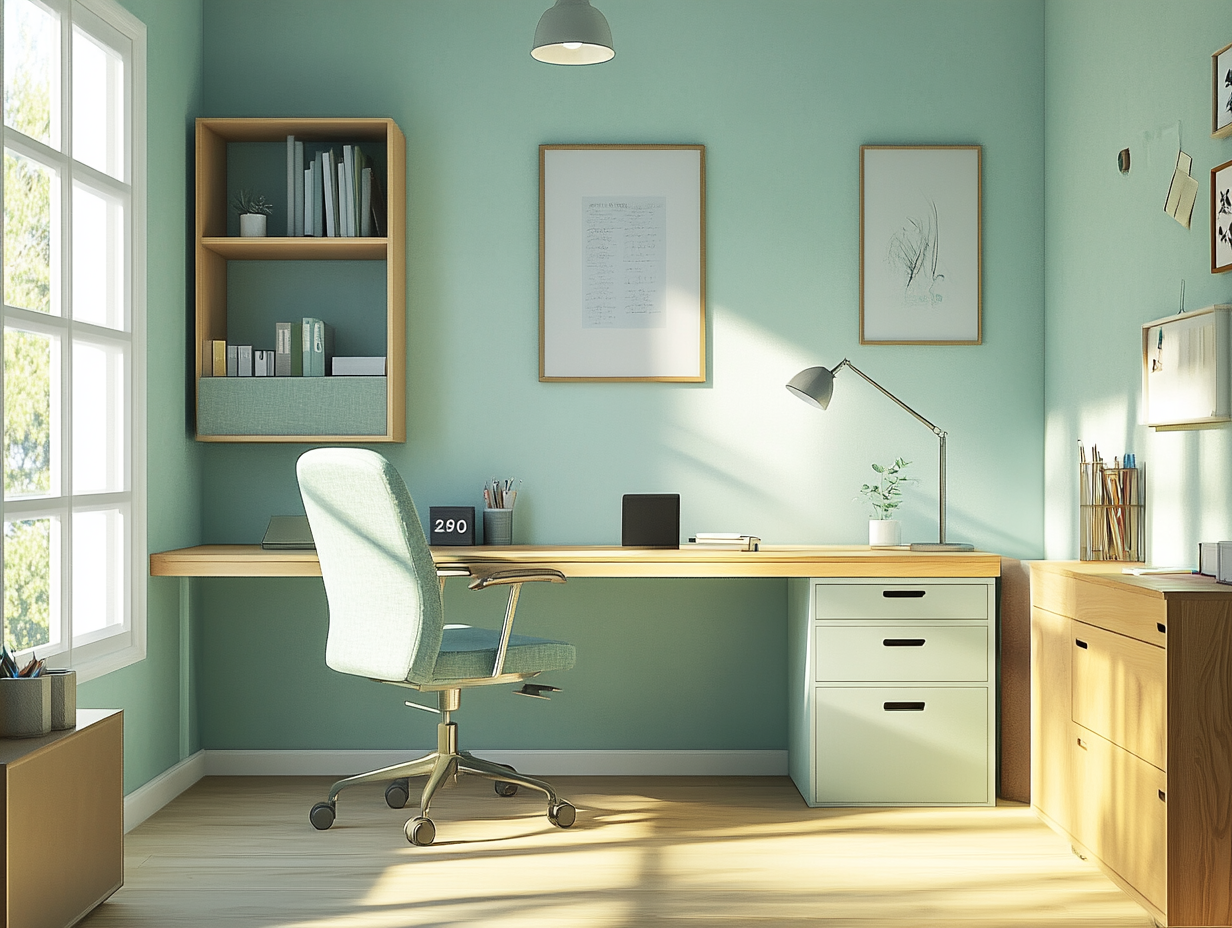Colors are more than just a style choice—they impact how we feel, how we think, and even how well we work. In your home office, the colors you choose can play a powerful role in shaping your mood, energy, and productivity. Whether you’re diving into deep focus or brainstorming new ideas, surrounding yourself with the right hues can help you stay inspired and efficient.
But color isn’t everything. A truly effective workspace also includes smart lighting, an ergonomic setup, and a layout that supports your workflow. In this article, we’ll focus on the psychology of color how it affects productivity and how to blend it beautifully with comfort and function.
Why Color Psychology Matters in Home Offices
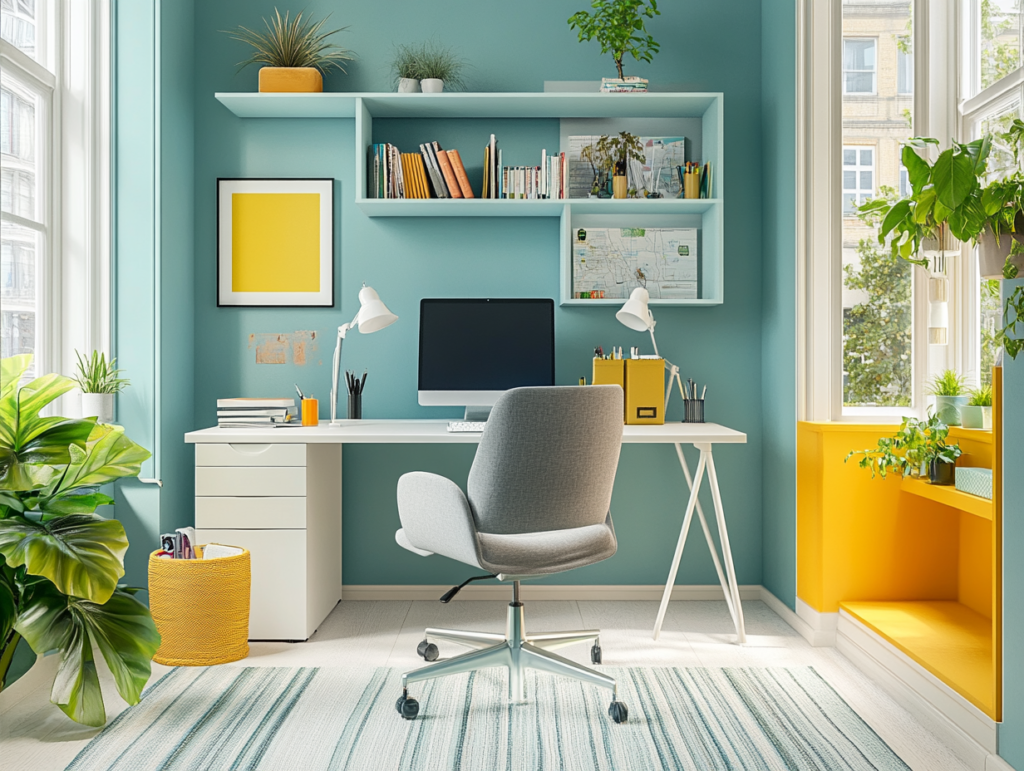
The Science Behind Color and Performance
Color psychology explores how different hues influence emotions, behaviors, and cognitive function. Studies have shown that certain colors can calm the mind, increase alertness, or boost creativity. In a home office, this can be the difference between feeling stuck and staying in flow.
Here are some color basics:
- Blue tones: Promote focus and calm. Ideal for long periods of concentrated work.
- Green shades: Reduce stress and eye strain. Great for screen-heavy jobs.
- Yellow hues: Spark creativity and positivity. Best used as an accent.
- Neutral and earthy colors: Offer a minimalist, distraction-free vibe.
Knowing how these colors affect your brain can help you tailor your space to your goals.
Matching Color to Work Style
Your role often determines your best color palette:
- Writers, developers, analysts: Try calming blues and grays.
- Designers, artists, marketers: Energizing yellows and oranges can stimulate ideas.
- Anyone managing stress: Soft greens and earthy tones help center the mind.
- Need motivation? Small splashes of red can bring energy—but too much can overwhelm.
The key is to choose colors that support your tasks and your temperament.
Balance Color with Function and Style
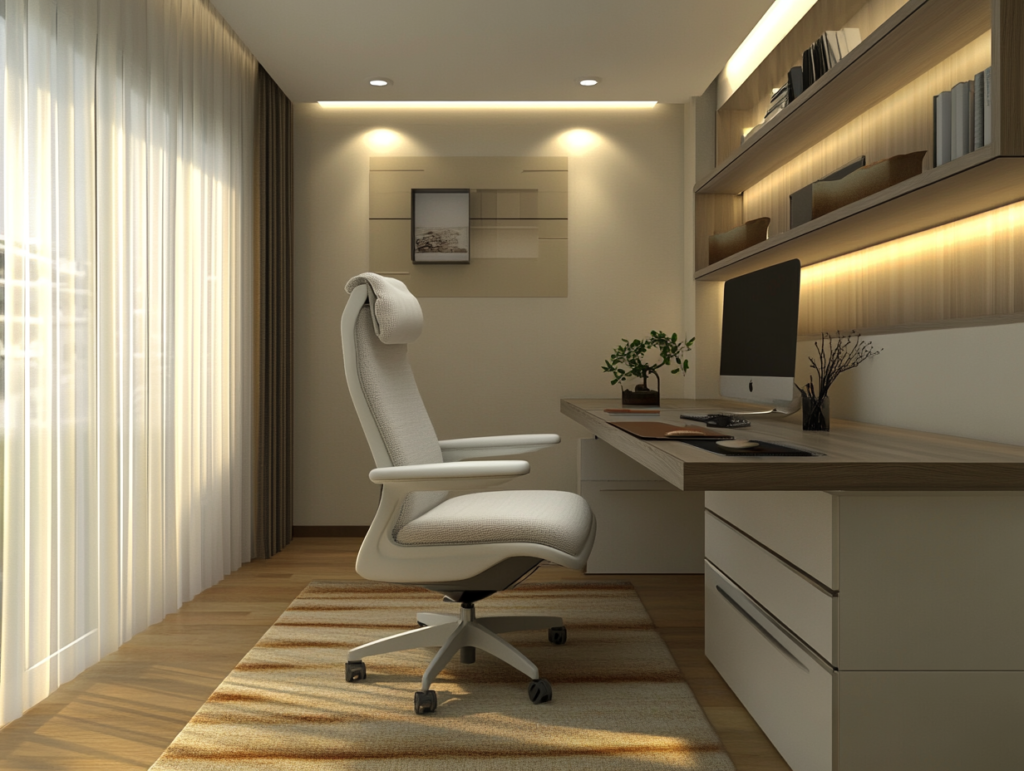
Blending Color and Ergonomic Design
An inspiring office doesn’t sacrifice comfort. That’s why your color palette should complement the essentials—like your ergonomic chair, desk, and storage setup.
- Neutral walls + bold ergonomic chair = a modern, intentional look.
- White or gray chairs pair beautifully with pastel or earthy tones.
- A black chair anchors a space filled with warm neutrals.
You want your workspace to feel cohesive—visually and physically.
Minimalist or Motivational?
Minimalist offices often feature neutral tones with clean lines. This promotes focus and reduces visual clutter. But for some, a little pop of color (like a coral pillow or teal lamp) can add joy and drive.
You don’t have to pick one or the other. Create balance by using bold colors sparingly and strategically.
Creating a Mood with Temperature and Tone
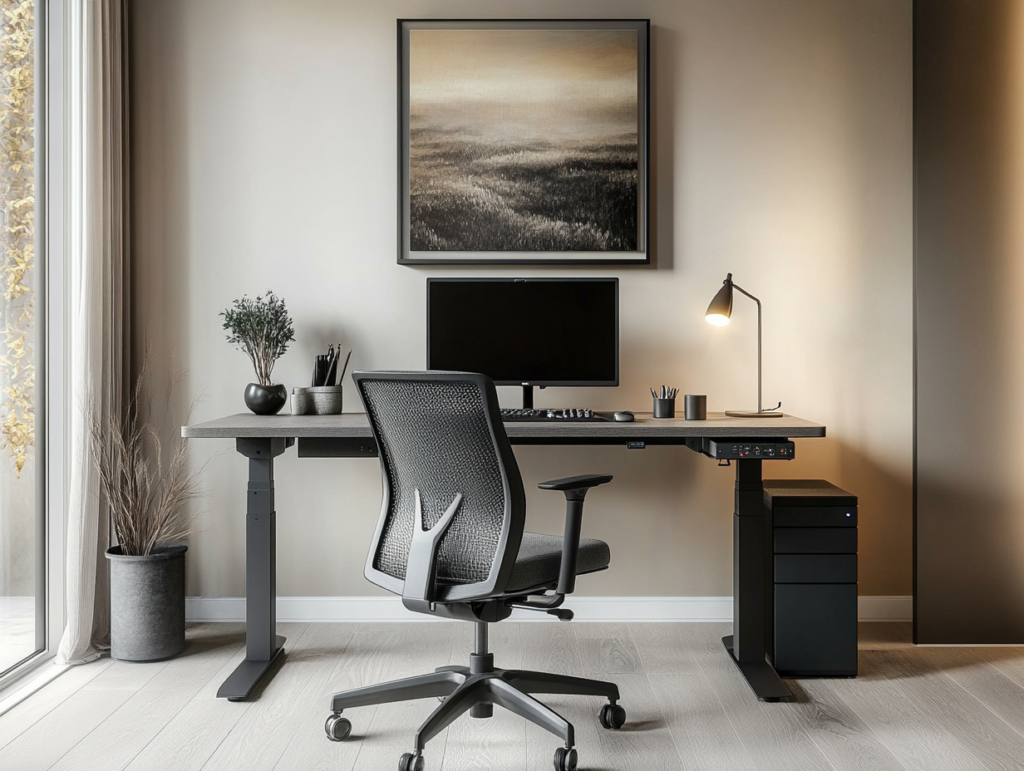
Warm, Cool, and Neutral Colors
Each color temperature sets a different mood:
- Warm colors (yellows, oranges): Cozy and inviting. Great for relaxed work.
- Cool colors (blues, soft greens): Help with focus and mental clarity.
- Neutrals (white, taupe, gray): Create a clean backdrop adaptable to any style.
For all-day productivity, a mix of cool and warm tones can provide both comfort and energy.
Lighting Matters
Light changes how color appears—especially natural light. Keep these tips in mind:
- Use lighter paint colors in dim rooms to brighten the space.
- Avoid glossy finishes that reflect too much light and cause glare.
- Test paint samples under morning and evening light before committing.
Practical Color Tips for a Better Workspace
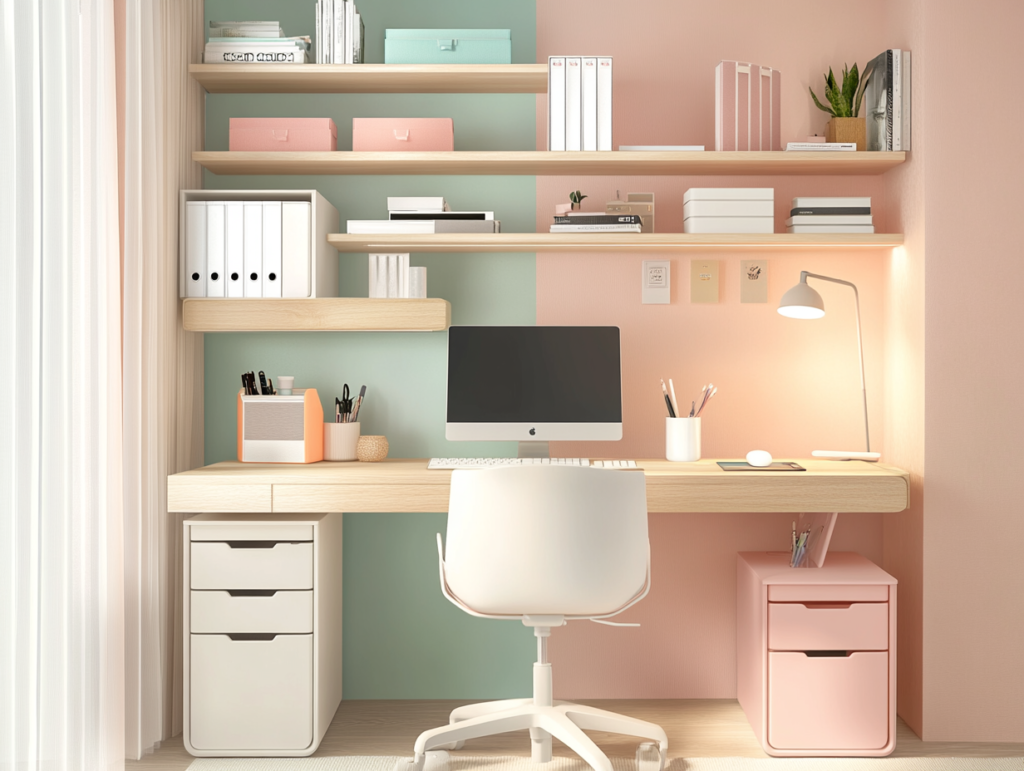
Try Before You Commit
Not sure where to start? Here are easy, low-risk ways to experiment with color:
- Test paint swatches in different areas of your workspace.
- Use a design app to visualize changes.
- Start with accessories: lamps, desk organizers, art, or cushions.
Accessorize with Purpose
Color doesn’t have to come from walls. Try these ideas:
- Use blue, green, or orange accents through storage bins or desktop items.
- Add a warm-toned rug under your desk.
- Use color-coded trays or folders for organization and design appeal.
Don’t Forget the Furniture
Let your ergonomic setup work with your palette:
- A sleek black chair works with almost anything.
- Beige or white chairs look great in bright, calming spaces.
- Leather pieces pair well with earthy or neutral tones.
Combine Color with Smart Lighting
The right lighting enhances your palette:
- Cool white LED light makes blues and grays sharper.
- Warm-toned bulbs soften bold colors and create balance.
- Smart bulbs allow you to shift the mood throughout the day.
Examples of Smart Color Use
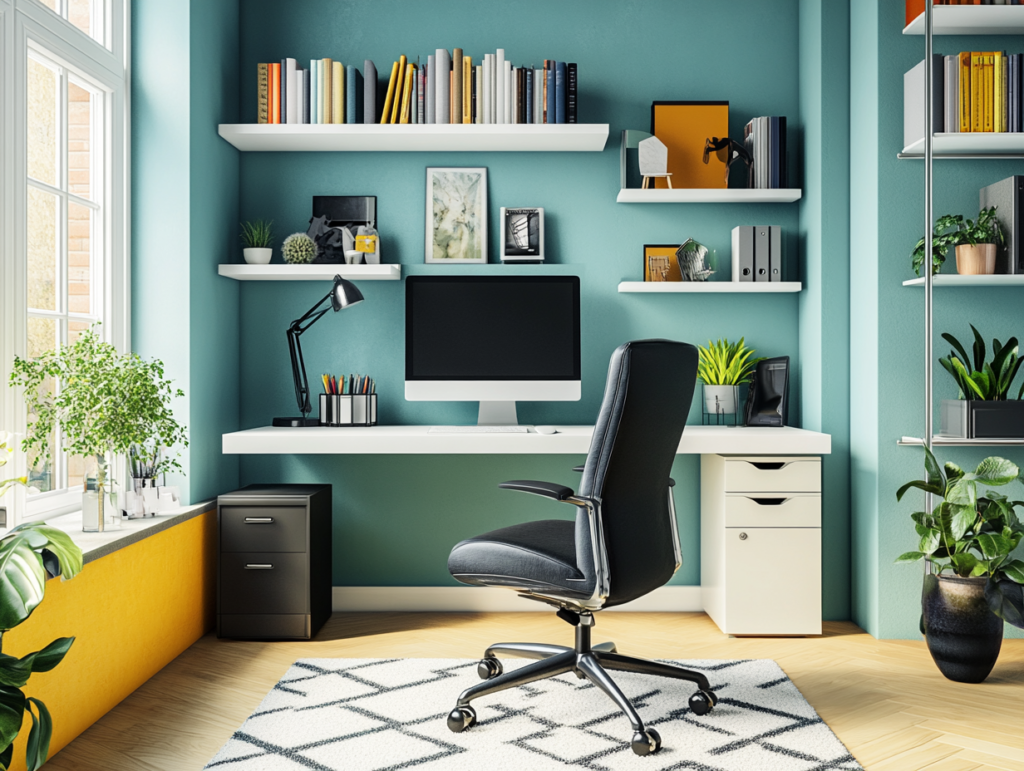
- Focus Zone in Blue: Pale blue walls + white furniture + natural light = calm and productive.
- Green Screen Oasis: Soft green accents + neutral chair + matte finish = screen-time serenity.
- Creative Pop: White walls + yellow lamp and pillows + sleek gray chair = fun but focused.
- Neutral Chic: Taupe walls + light wood furniture + black chair = grounded and distraction-free.
- Monochrome Magic: Charcoal gray palette + matte black desk + chrome details = sleek and bold.
- Energized Elegance: Teal accents + clean lines + soft lighting = personality without chaos.
These combos show how you can reflect your work style through color.
Design with Intention
Choosing colors isn’t about trends—it’s about how you want to feel in your space. When you combine the right hues with ergonomic design, smart lighting, and thoughtful layout, you create a home office that truly works for you.
Let color set the tone. Let comfort shape the experience. And let your workspace reflect the best version of how you work.

